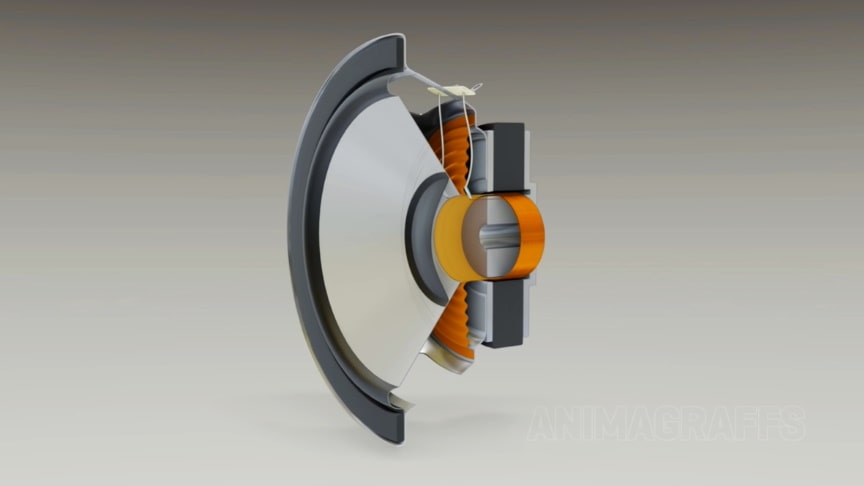Just one speaker can reproduce an entire orchestra of sounds. How is this possible? The design is deceptively simple, with incredibly complex potential.
image: Animagraffs
The most common type of driver, commonly called a dynamic loudspeaker, uses a lightweight diaphragm, or cone, connected to a rigid basket, or frame, via a flexible suspension, commonly called a spider, that constrains a voice coil to move axially through a cylindrical magnetic gap.
When an electrical signal is applied to the voice coil, a magnetic field is created by the electric current in the voice coil, making it a variable electromagnet. The coil and the driver’s magnetic system interact in a manner similar to a solenoid, generating a mechanical force that moves the coil (and thus, the attached cone).
Advertisement
Application of alternating current moves the cone back and forth, accelerating and reproducing sound under the control of the applied electrical signal coming from the amplifier. Like a drum skin vibrating back and forth, the moving cone pumps sounds out into the air. This is why loudspeakers are technically called drivers: they “drive” (move) the air to produce sound.











